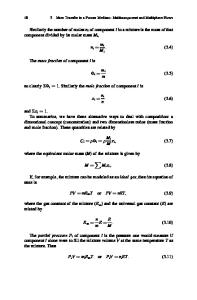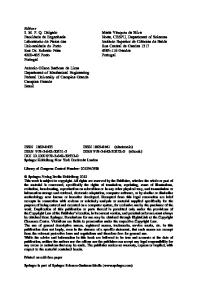Mass Transfer in Water-Saturated Concretes
- PDF / 496,823 Bytes
- 9 Pages / 420.48 x 639 pts Page_size
- 0 Downloads / 308 Views
MASS TRANSFER IN WATER-SATURATED CONCRETES ALAN ATKINSON, PETER A. CLAISSE, ANDREW W. HARRIS AND ALLAN K. NICKERSON Materials Development Division, Harwell Laboratory, Oxon OX 1 ORA, UK. ABSTRACT Cements and concretes are often considered as components of barriers for the containment of radioactive waste. The performance of such materials as mainly physical barriers to the transport of dissolved radionuclides depends on the mass transfer characteristics of the material. In particular the diffusion and sorption behaviour of the radionuclides and the water permeability are important. These parameters also influence how the chemistry of the concrete is imposed on the repository. In addition, the transport of gas through concrete controls the way in which gases escape from the repository. Diffusion and gas transport have been measured in a variety of cementitious materials, covering both structural concretes and cementitious backfills; all possible repository construction materials. Measurements have been made using aqueous iodide, strontium and caesium ions and tritiated water as diffusants. The results show that the diffusion of tritiated water is more rapid than that of other species, whilst the transport of strontium and caesium is hindered by sorption; particularly in materials containing blast furnace slag. The transport of gas in these materials has been found to be very sensitive to the degree of water saturation and is extremely low in fully saturated structural concretes. Cementitious backfills have, nevertheless, been identified that have appreciable gas transport even when almost water saturated. The consequences of the results for the performance of cementitious barriers are discussed. INTRODUCTION In the UK it is intended that a radioactive waste repository for intermediate and low level waste will be established at some depth below ground and will be saturated by groundwater soon after closure. Thus, the transport of radionuclide species will occur by the movement of dissolved material in the aqueous phase. The time-scale for the physical containment of a radionuclide species by a radioactive waste repository is determined by the rate at which the species can traverse the barrier presented by the waste containers (steel) and the structure of the repository (reinforced concrete walls and floors and a cementitious backfill). In the long term, the near-field barriers are primarily concerned with the retention of radionuclides by chemical means; that is, the reduction of the effective solubility of a species by maintaining a high pH environment and strong sorption within the repository [1]. However, during the immediate post closure period, the containment of some relatively soluble and short-lived isotopes, such as strontium and caesium, will benefit from the physical barriers presented by the steel waste containers and the concrete structure of the repository. The long term chemical containment will also be influenced by the rates and nature of the transport of the dissolved species into the concrete compo
Data Loading...











